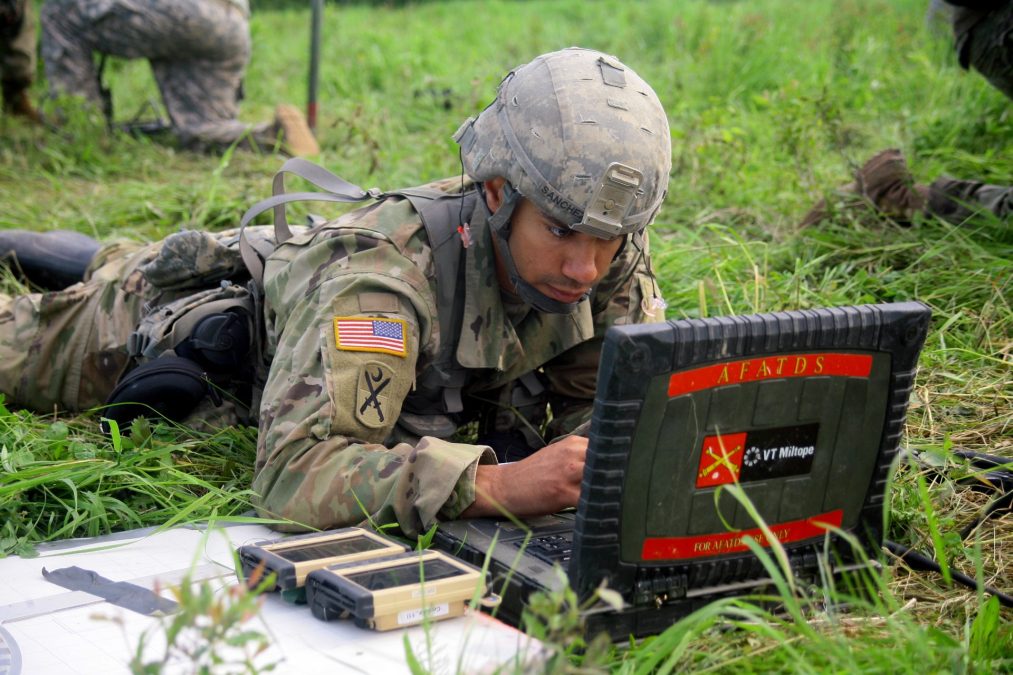Army’s Cyber Quest sought to standardize data from vendors

The Army recently set out to standardize its data formats for an annual cyber experimentation to not only reduce integration challenges, but prove this type of standardization can be done.
The effort was part of the annual Cyber Quest event held earlier this month at Fort Eisenhower, Georgia. Cyber Quest is an experimentation venue where the Army seeks to test emerging technologies on either existing or desired capabilities brought by contractors that respond to specific problem statements from the service in order to help inform future requirements and concepts.
Officials involved with the exercise noted this year’s event was different than in years past, explaining they wanted to develop a data flow that covered all domains of battle and was housed in a single repository at the division level, the new unit of action for the Army.
Moreover, for the first time, the event served as a lab-based risk reduction effort for technologies and concepts that will eventually feed into the next Project Convergence capstone event, the culmination of several experimentation events to test the interoperability of systems across the Army as well as the other services and multinational partners.
The experiment sought to get after “how do we maximize data in that future environment,” Maj. James Harryman, Cyber Quest lead exercise planner and a U.K. exchange officer at the Cyber Center of Excellence, said in an interview.
Turning the Army into a data-centric service is one of Army Secretary Christine Wormuth’s top priorities, which essentially means starting with data as the foundation for operations as opposed to platforms. Data is also crucial for the Pentagon’s top priority dubbed Combined Joint All-Domain Command and Control (CJADC2), which envisions how systems across the entire battlespace from all services and key international partners could be more effectively and holistically networked and connected to provide the right data to commanders for better and faster decision-making.
To reduce integration challenges between the capabilities brought by vendors, Harryman said he directed they all put their capabilities in the same file format — in this case, the JSON open standard file format.
“By understanding that and giving almost that integration challenge back out to industry, we really managed to make massive strides securing a really short three-week dedicated integration window here in the battle lab,” Harryman said.
“The reason that I did that, again, was to reduce the friction for integration. But then by also being able to translate that cursor on target’s file format, again, into a JSON file format and populate that into that elastic repository means that they’ve managed to stitch together the land domain along to all the other ones and then coalesce them in a single location,” he continued.
“I think as we move further forward, that’s key, when we put out these calls to industry, it’s not just a ‘What have we got that you have that you might be able to answer our problems? And we also need it in these file formats.’ I think, with the proliferation of sensors across the battlespace, being absolutely key about how we receive that information and understanding the data flows is imperative we move further forward, otherwise, it’s going to be really messy and we certainly won’t get anywhere near the advance in speed that we’re trying to get after if we are stuck with a data problem. But you need to do that ahead of time,” Harryman added.
The Army has also begun moving several of its programs to the Tactical Assault Kit (TAK) framework, where applications for situational awareness data and geospatial visualizations can be created. This information is displayed on Android-based devices mounted to soldiers’ chests, vehicles, or operations center screens.
One such program is the Electronic Warfare Planning and Management Tool (EWPMT), which serves as a command-and-control planning capability that allows forces to visualize potential effects within the invisible spectrum and chart courses of action to prevent their forces and systems from being jammed during operations.
The Army earlier this year canceled a task order for the next phase of the program that had been planned, shifting EWMPT’s electromagnetic warfare and spectrum management capabilities to TAK to be more interoperable with joint systems.
While that next phase is still in the early stages of development, Harryman said officials will look to work with the program office as they add new capabilities to better understand how the Cyber Center of Excellence can best help as part of next year’s Cyber Quest.
Moving to these standard file formats helps set the groundwork to the capstone series. It has also demonstrated to the acquisition community, who will be running programs, that this can be done.
“From an experimentation lens, we want to show that there’s the possibility to do this, but we can drive the acquisition process through experimentation,” Col. Brett Riddle, director of the Cyber Battle Lab, said. “As it shifts over the acquisition, there’s going to be that other process that they need to go through to get the pieces put into place where they can actually drive that data standardization. That’s the piece that we’re really trying to push the acquisition community into saying, ‘OK, here’s the way to do it.’ James is showing that and as we shift into acquisition, here’s one way to do that.”



